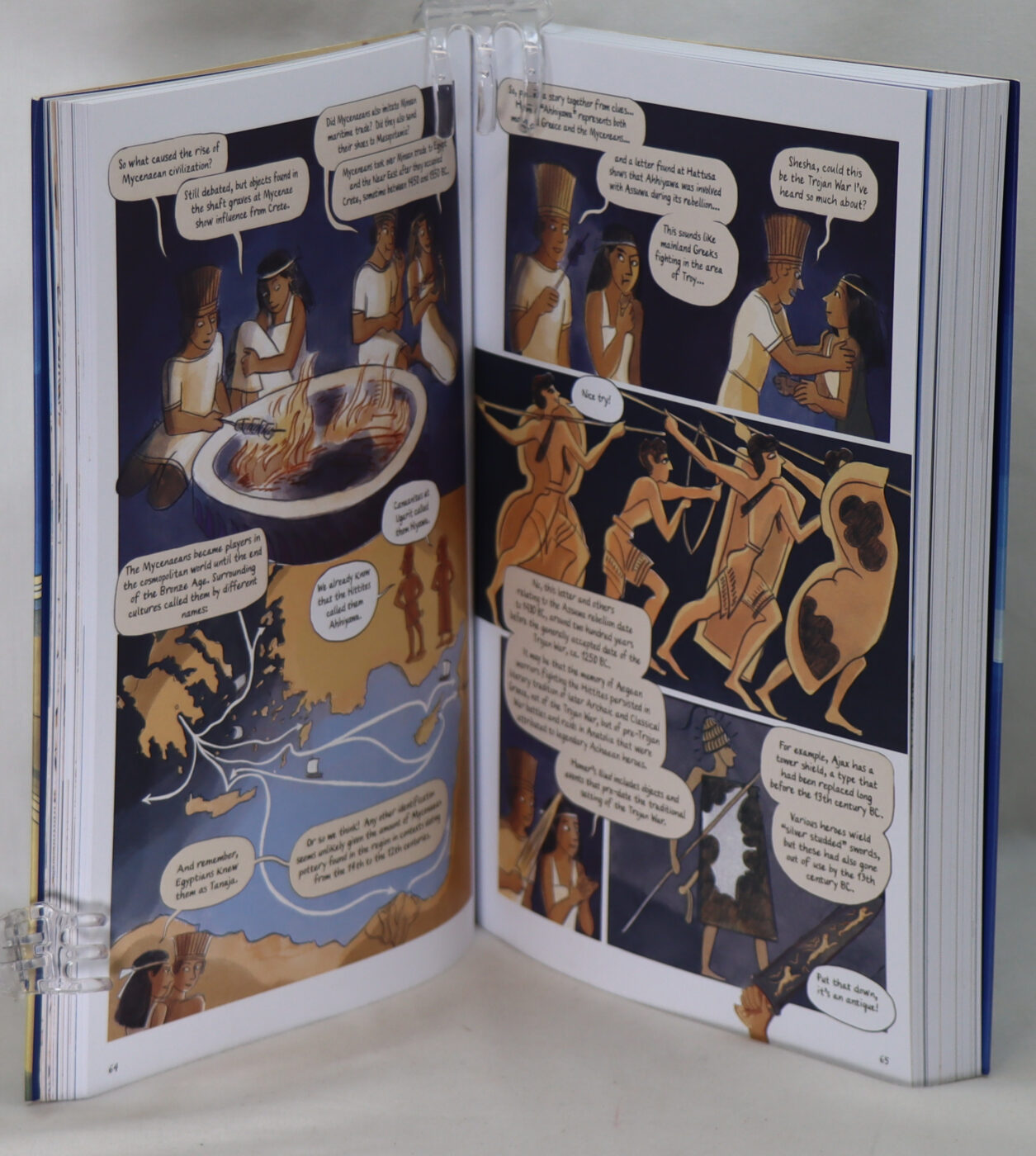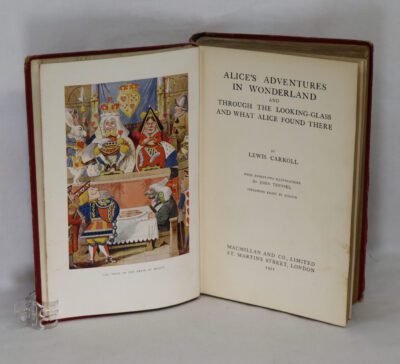1177 BC. A Graphic History of the Year Civilisation Collapsed.
By Eric H Cline & Glynnis Fawkes
ISBN: 9780691255774
Printed: 2024
Publisher: Princeton University Press.
| Dimensions | 18 × 25 × 3 cm |
|---|---|
| Language |
Language: English
Size (cminches): 18 x 25 x 3
Condition: As new (See explanation of ratings)
Item information
Description
Paperback. Blue cover with yellow title. Sea invasion scene on the front board.
We provide an in-depth photographic presentation of this item to stimulate your feeling and touch. More traditional book descriptions are immediately available
Note: This book carries a £5.00 discount to those that subscribe to the F.B.A. mailing list
“1177 B.C. is a spectacular achievement―deftly adapted, beautifully drawn, and captivatingly colored by Glynnis Fawkes. . . . [She] doesn’t just bring history alive, she propels it across the page in an accessible, gripping way.”―Alison Bechdel, New York Times bestselling author of Fun Home
A beautiful, full-color graphic version of Eric Cline’s bestselling 1177 B.C., adapted by award-winning author-illustrator Glynnis Fawkes
Eric Cline’s 1177 B.C. tells the story of one of history’s greatest mysteries: what caused the ancient civilizations of the Aegean and Eastern Mediterranean to collapse more than three thousand years ago, bringing the Late Bronze Age to an abrupt end? In this vivid and captivating full-color graphic adaptation of the landmark book, author-illustrator Glynnis Fawkes invites us to follow two young friends living in the aftermath of the cataclysm as they unravel why it happened―and reveal important lessons for today’s interconnected and vulnerable world.
Pel, a member of the marauding Sea Peoples, and Shesha, an Egyptian scribe, visit the kingdoms of the Minoans, Mycenaeans, Hittites, Canaanites, Assyrians, and Egyptians to explore the calamities that brought them down. This graphic history depicts the people, events, art, architecture, and lands that Pel and Shesha encounter. We witness the Sea Peoples’ battles on land and sea, earthquakes on the Greek mainland, droughts and famine in Anatolia, invasions in north Syria, and possible rebellions in Canaan. Along the way, we also learn about the assassination of a Hittite prince traveling to marry an Egyptian queen, the sinking of a merchant ship laden with international goods, and the return of a pair of sandals to Crete by the Babylonian king Hammurabi.
An entertaining adventure story, this dazzling comic is also historically accurate and enlightening, inviting readers of all ages to think about the surprising factors and theories that explain why societies, whether ancient or modern, die or survive when struck by catastrophes.
Review: Great fun and well worthwhile, the artwork may not be to the standard of either Spiderman or the Beano, but it does its job and includes redraws of lots of original references. I liked the running gag of the Peleset hat. There is more here than the text version of 1177 BC, where the author disingenuously suggested that there was a fixed chronology for the Egyptian Eighteenth Dynasty. There are extra dates in the graphic version which bring problem areas to the fore. In particular the identification of Ankhesenamun as Dahamunzu (page 93). The context of the successful Hittite siege of Carchemish (error on page 56 of the text version) links to the final stages of Suppiluliuma’s Syrian war in Akhenaten’s final years, as documented by Amarna Letters: EA 53, EA 54, EA 140, EA 151, EA 170, EA194, et al. Jacob van Dijk presented evidence for reducing Horemheb’s reign length from 27/28 to 14/15 years if these years are removed from Egypt they must also be removed from Hatti and are about the same as the years between Meritaten (who I favour as Dahamunza) and Ankhesenamun.
Jared Miller wrote a paper (2008) establishing contact between Mursilis II and Horemheb over the revolt by Tette of Nuhasse. Suppiluliuma I is now shown, page 244, acceding after Akhenaten despite EA 41 – the Hittite Great King would not have had good relations with any pharaoh after he annexed Ugarit, Amurru and Kadesh at the end of Akhenaten’s reign.
Contra page 111, Muwattalis was the defender of Kadesh and Ramesses II was the aggressor, despite Benteshina’s surrender to the force majeure of Seti I.
1177 BC makes much of Homer’s doubtfully historic Trojan War but fails to mention “The Cretan Lie” from the Odyssey, almost a parallel text to that of Ramesses III at Medinet Habu.
1177 BC omits Sea Peoples raids in the Amarna Period (EA 38) and the capture of Sherden by Prince Rameses, who later served him at Kadesh (Kitchen p.40/41), while failing to clarify their solely mercenary role in the attempted Libyan migration in the time of Merneptah.
Typo on page 236: the wrong Suppiluliuma and the wrong date. I take Hannuti to be pro-Hittite, ousted by pro-Mitanni (later pro-Egyptian) Akizzi.
- ERIC H. CLINE is Professor of Classics and Anthropology, Director of the Capitol Archaeological Institute, and former Chair of the Department of Classical and Near Eastern Languages and Civilizations at The George Washington University, in Washington DC. A National Geographic Explorer, Fulbright scholar, Getty scholar, and NEH Public Scholar with degrees from Dartmouth, Yale, and the University of Pennsylvania, he is an active field archaeologist with more than 30 seasons of excavation and survey experience in Israel, Egypt, Jordan, Cyprus, Greece, Crete, and the United States, including ten seasons at the site of Megiddo (biblical Armageddon) in Israel and ten more seasons at Tel Kabri, also in Israel, where he is currently Co-Director. Winner of the 2014 “Nancy Lapp Award for Best Popular Book” from the American Schools of Oriental Research for his book “1177 BC: The Year Civilization Collapsed,” which was also considered for a Pulitzer Prize, and winner of the same award again in 2018 for his book “Three Stones Make a Wall: The Story of Archaeology,” he is also a three-time winner of the Biblical Archaeology Society’s “Best Popular Book on Archaeology” Award (2001, 2009, and 2011). A popular lecturer who has appeared frequently on television documentaries, he has also won national and local awards for both his research and his teaching. He is the author or editor of more than 20 books, which have been translated into nineteen languages, as well as more than 100 scholarly articles, and several recorded lecture courses. His previous books written specifically for the general public include “The Battles of Armageddon: Megiddo and the Jezreel Valley from the Bronze Age to the Nuclear Age” (2000); “Jerusalem Besieged: From Ancient Canaan to Modern Israel” (2004); “From Eden to Exile: Unraveling Mysteries of the Bible” (2007); “Biblical Archaeology: A Very Short Introduction” (2009); “The Trojan War: A Very Short Introduction” (2013); “1177 BC: The Year Civilization Collapsed” (2014; revised 2021); “Three Stones Make a Wall: The Story of Archaeology” (2017) and the abbreviated spinoff “Digging Deeper: How Archaeology Works” (2020); “Digging Up Armageddon: The Search for the Lost City of Solomon” (2020), and, most recently, the sequel volume “After 1177 BC: The Survival of Civilizations” (2024) and a graphic version of the original, entitled “1177 BC: A Graphic History of the Year Civilization Collapsed” (2024, drawn by the incomparable Glynnis Fawkes).
Glynnis Fawkes is the author-illustrator of Charlotte Brontë before Jane Eyre and Persephone’s Garden, among other books, and her comics have appeared on the website of The New Yorker. She has worked as an archaeological illustrator around the Aegean and Eastern Mediterranean, and teaches at the Center for Cartoon Studies in Vermont.
Want to know more about this item?

Related products
Share this Page with a friend












